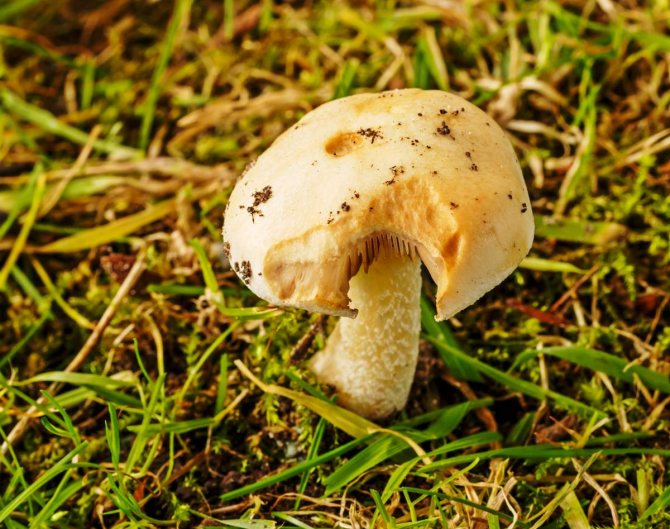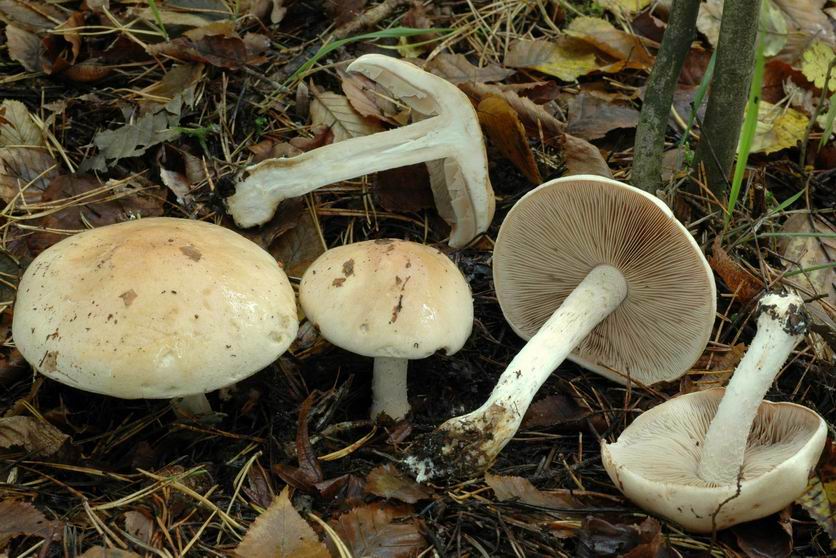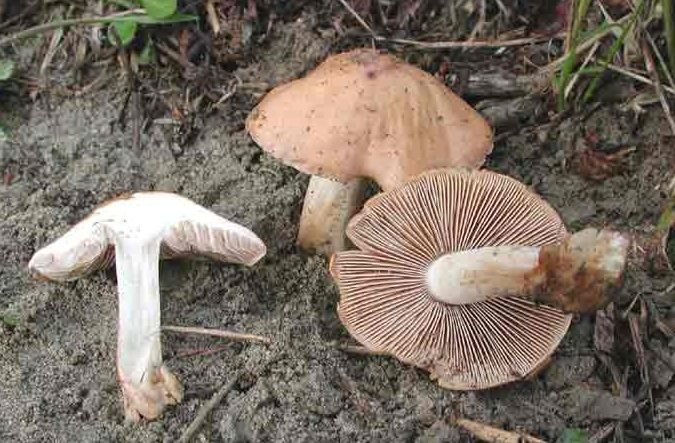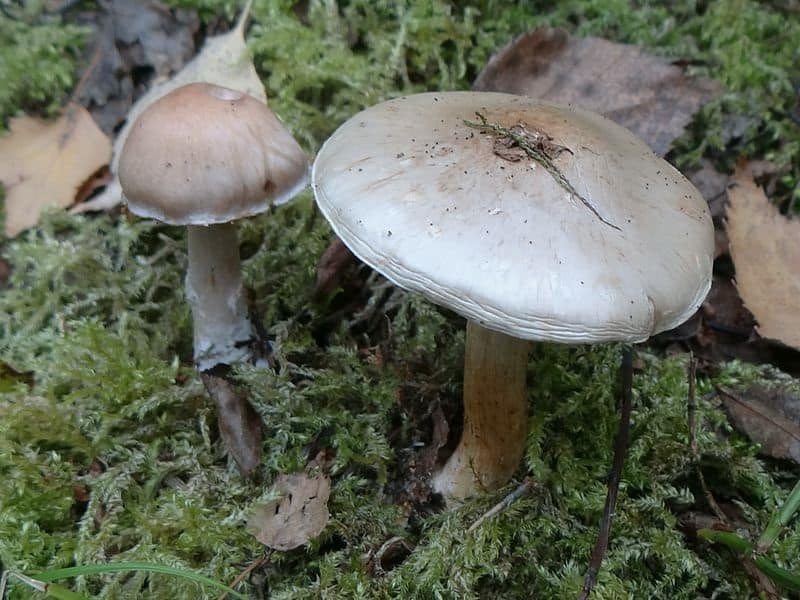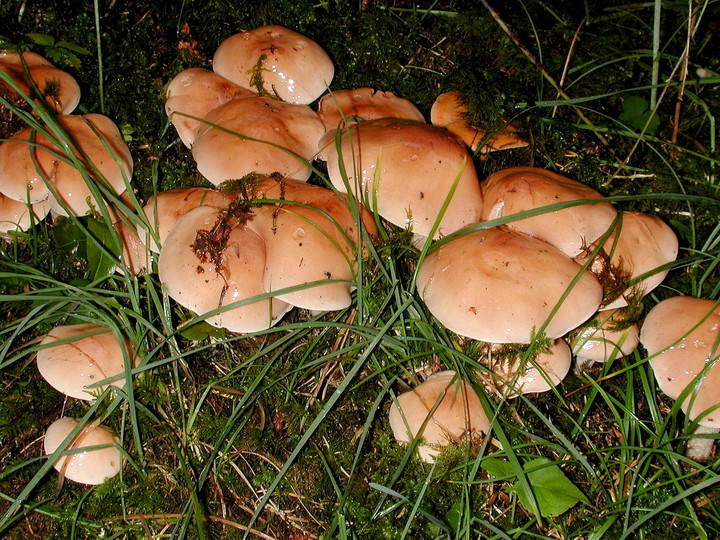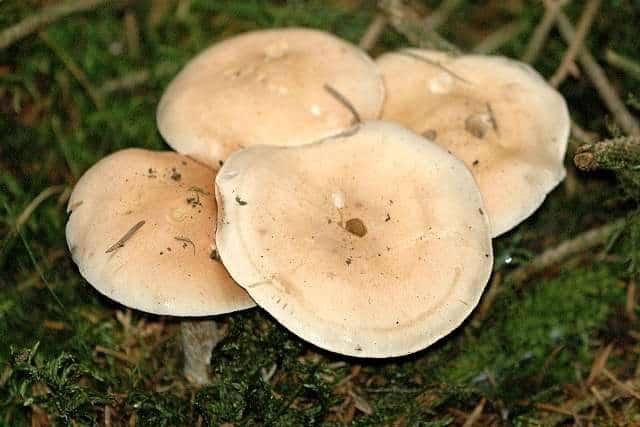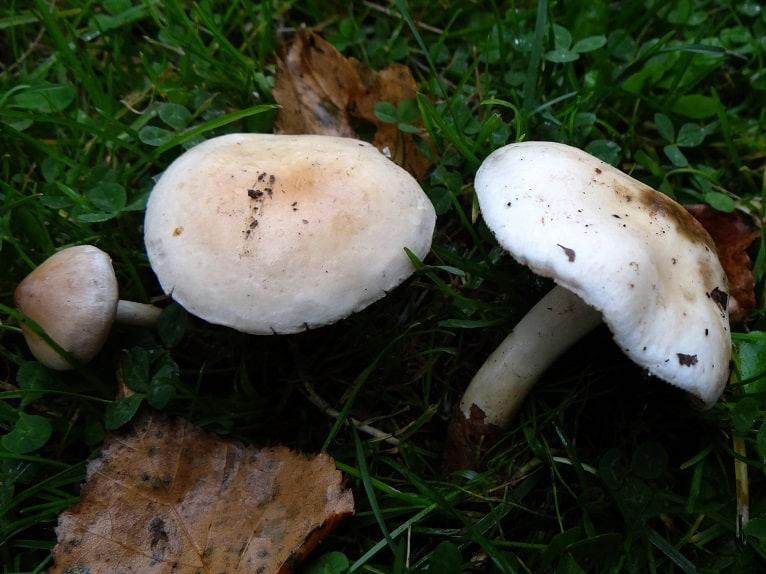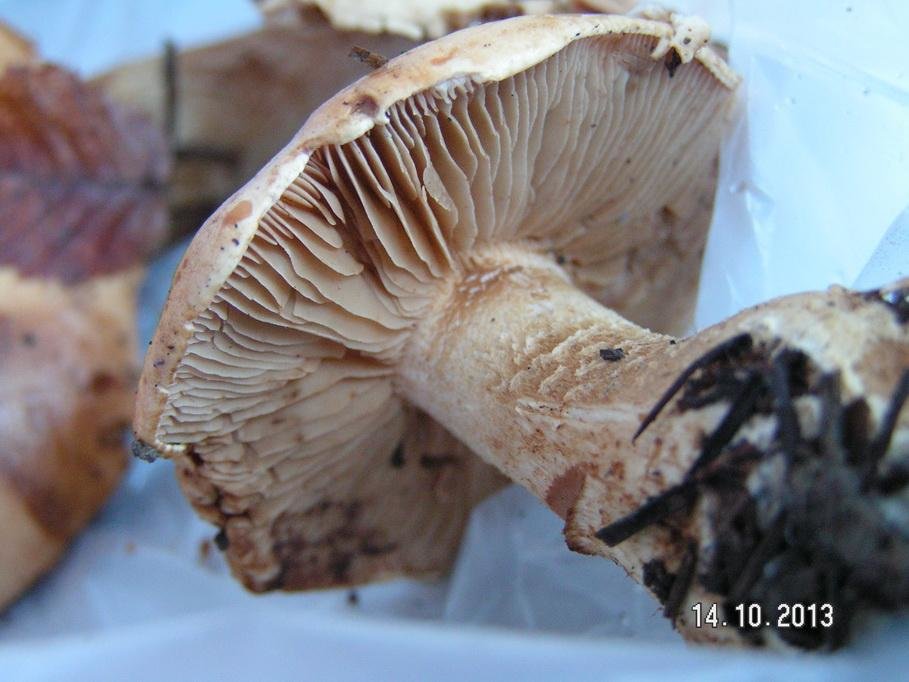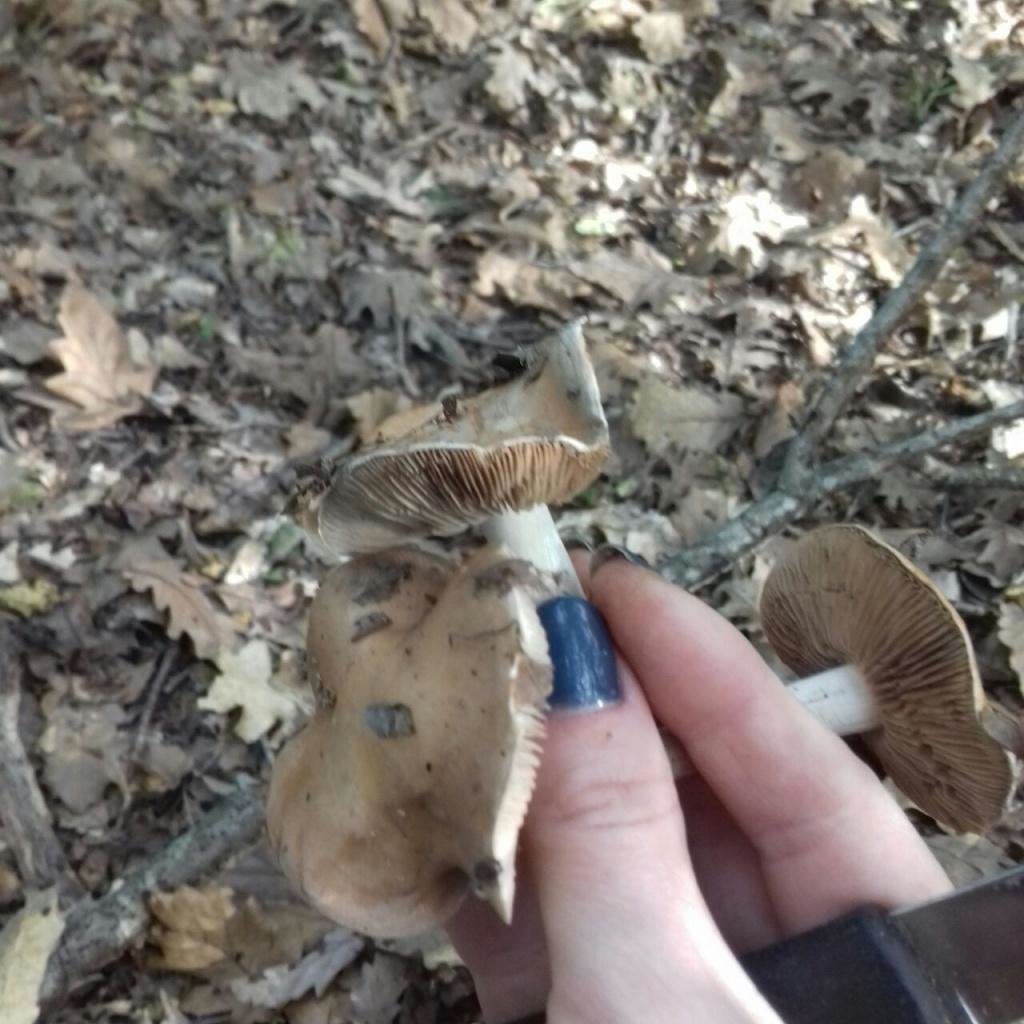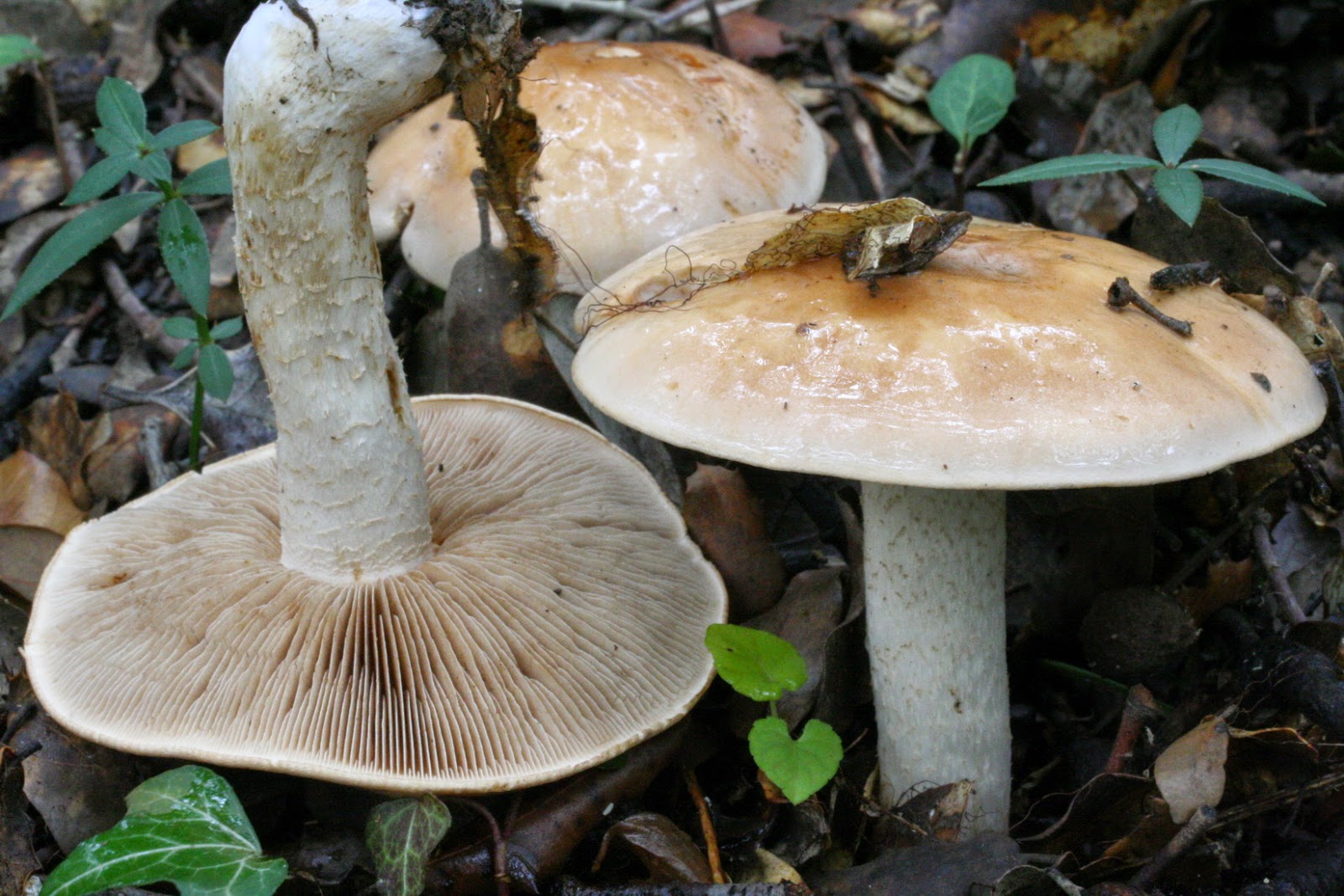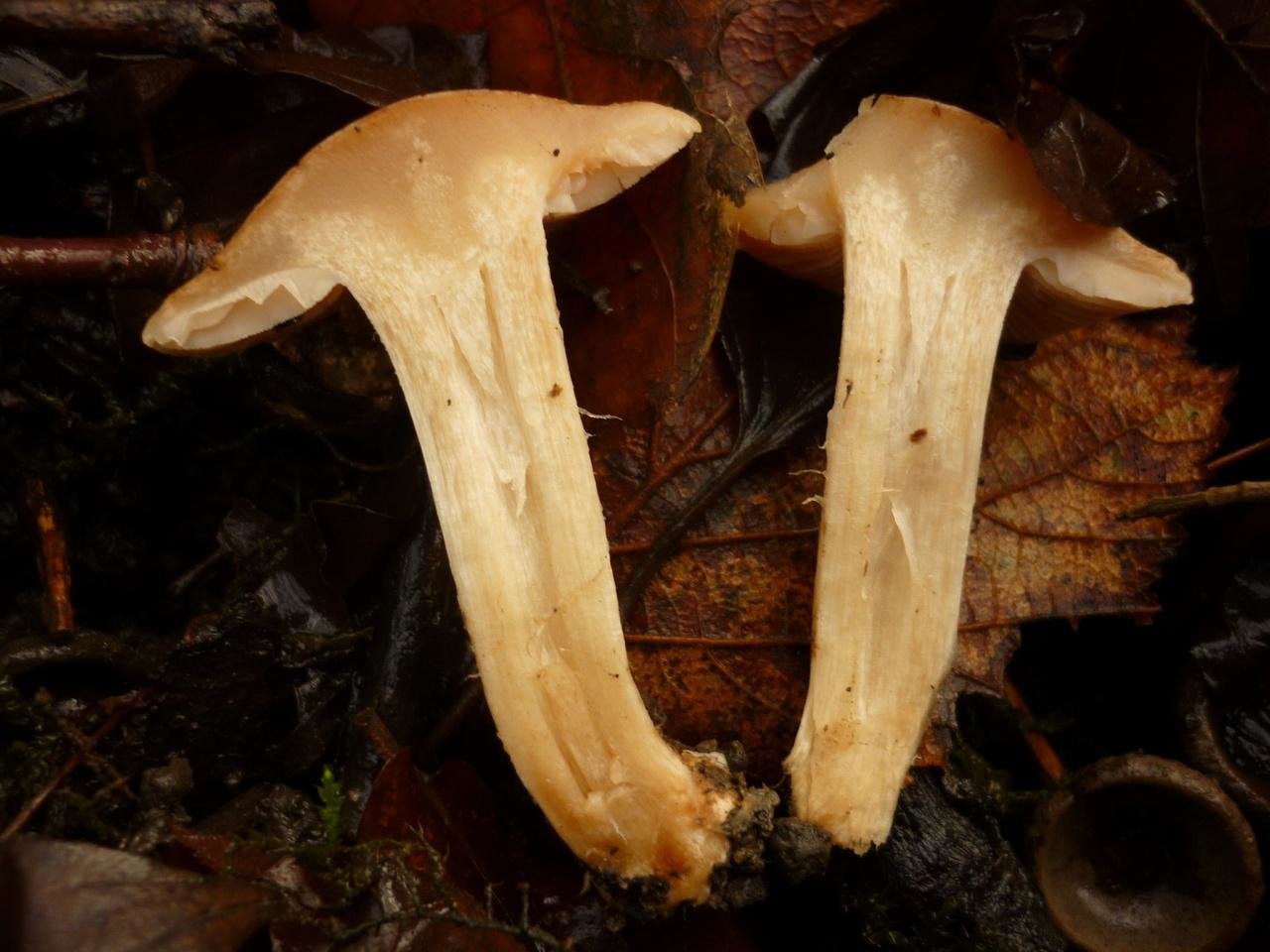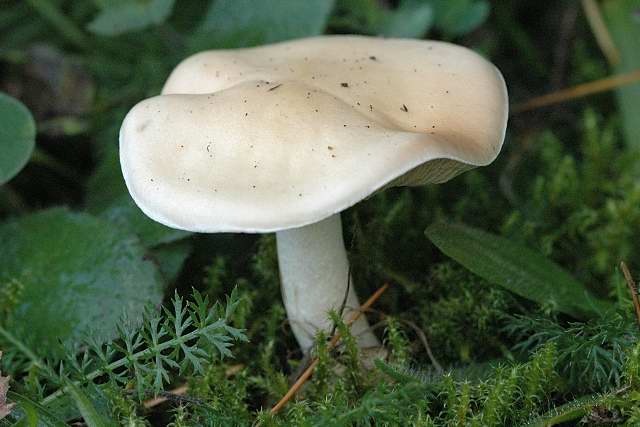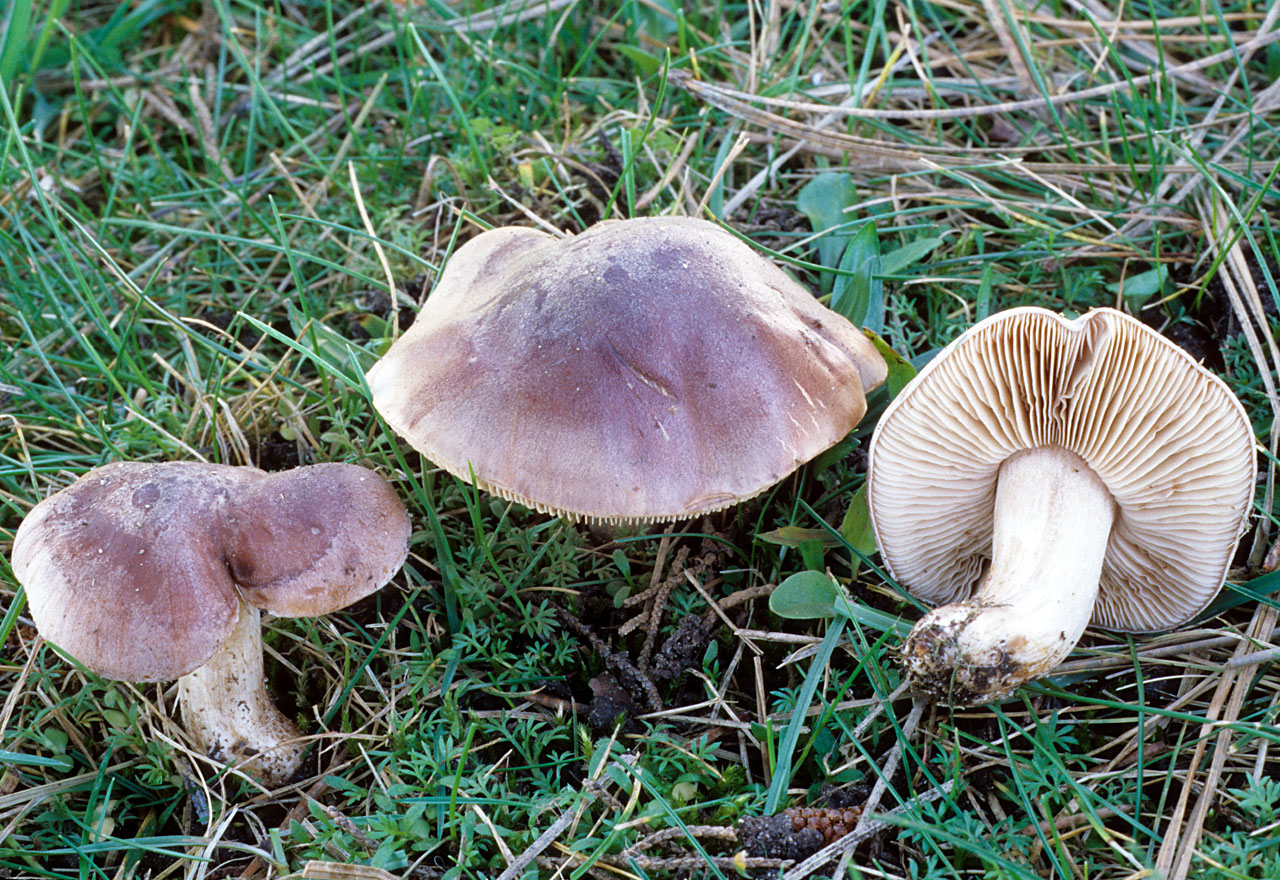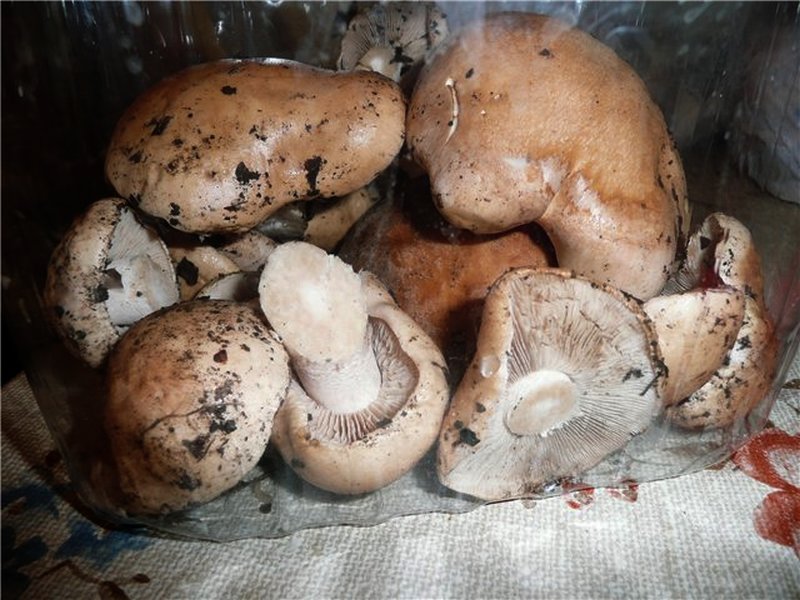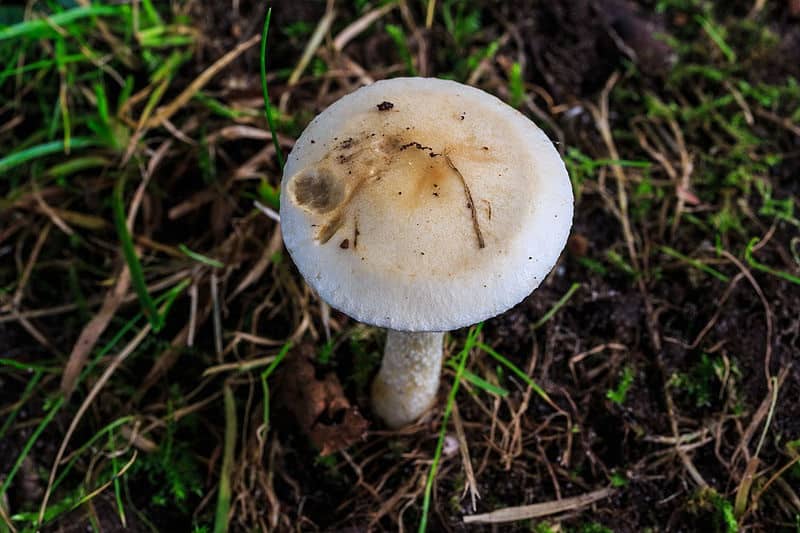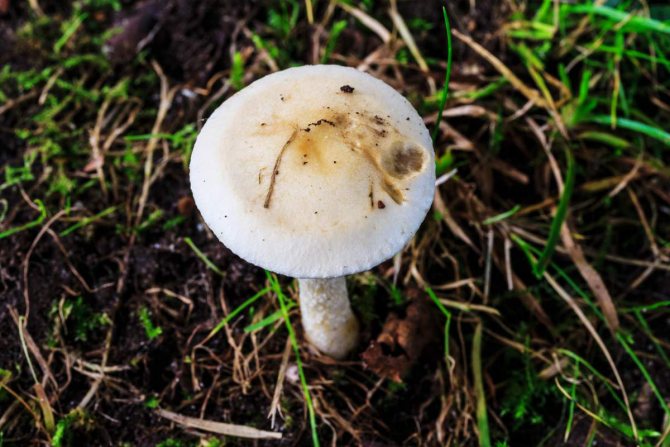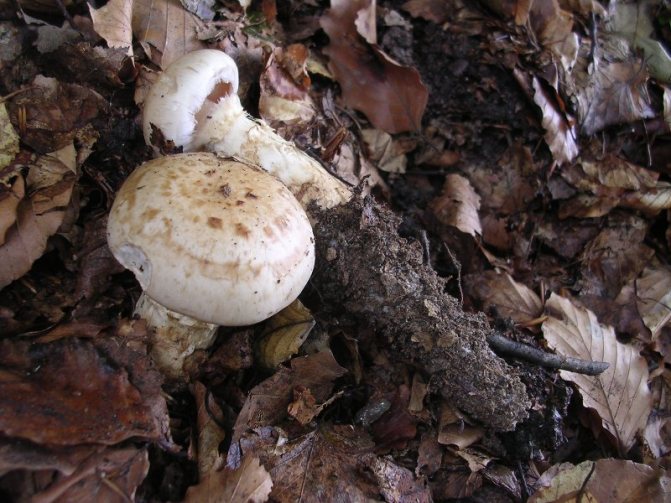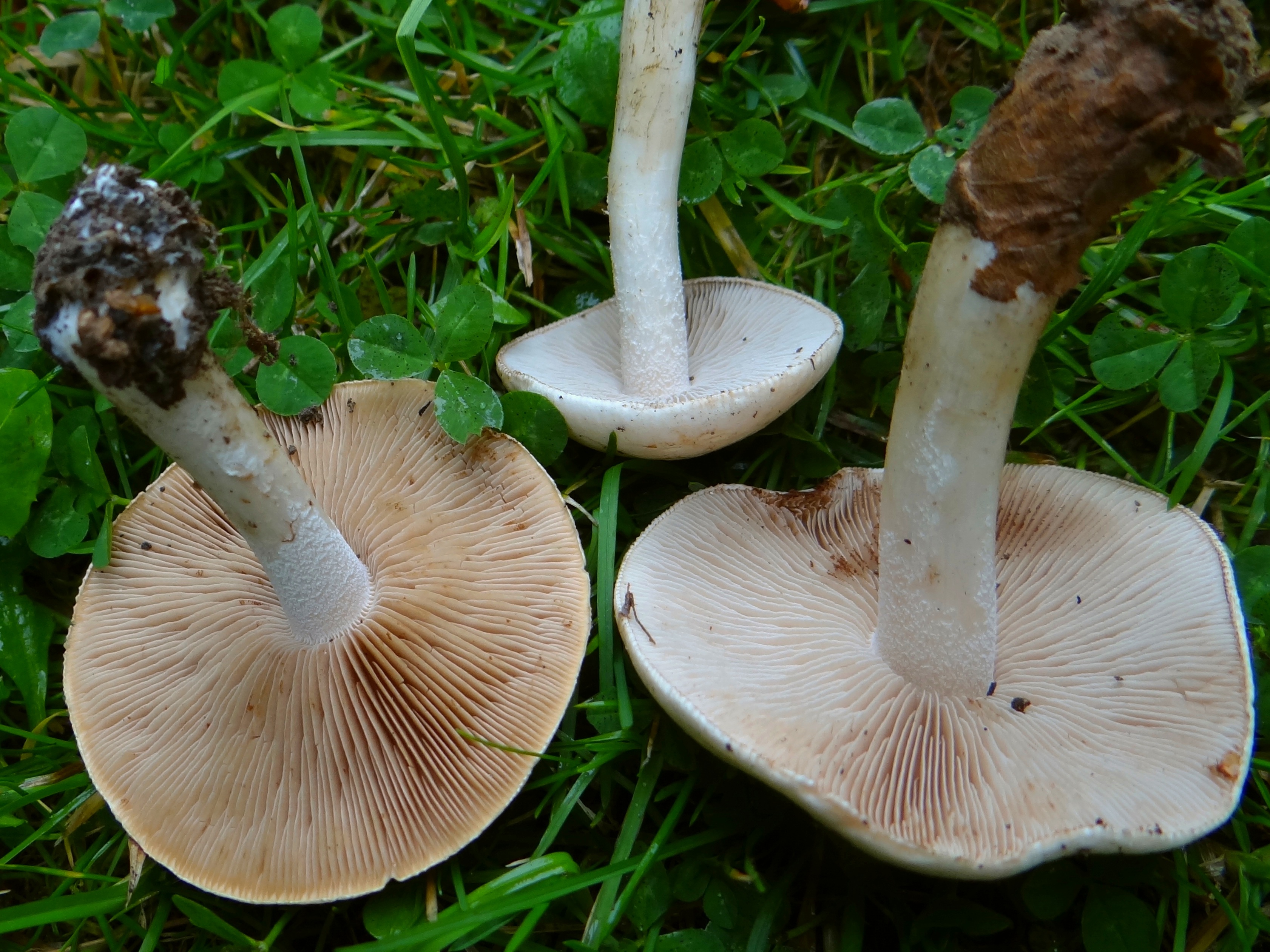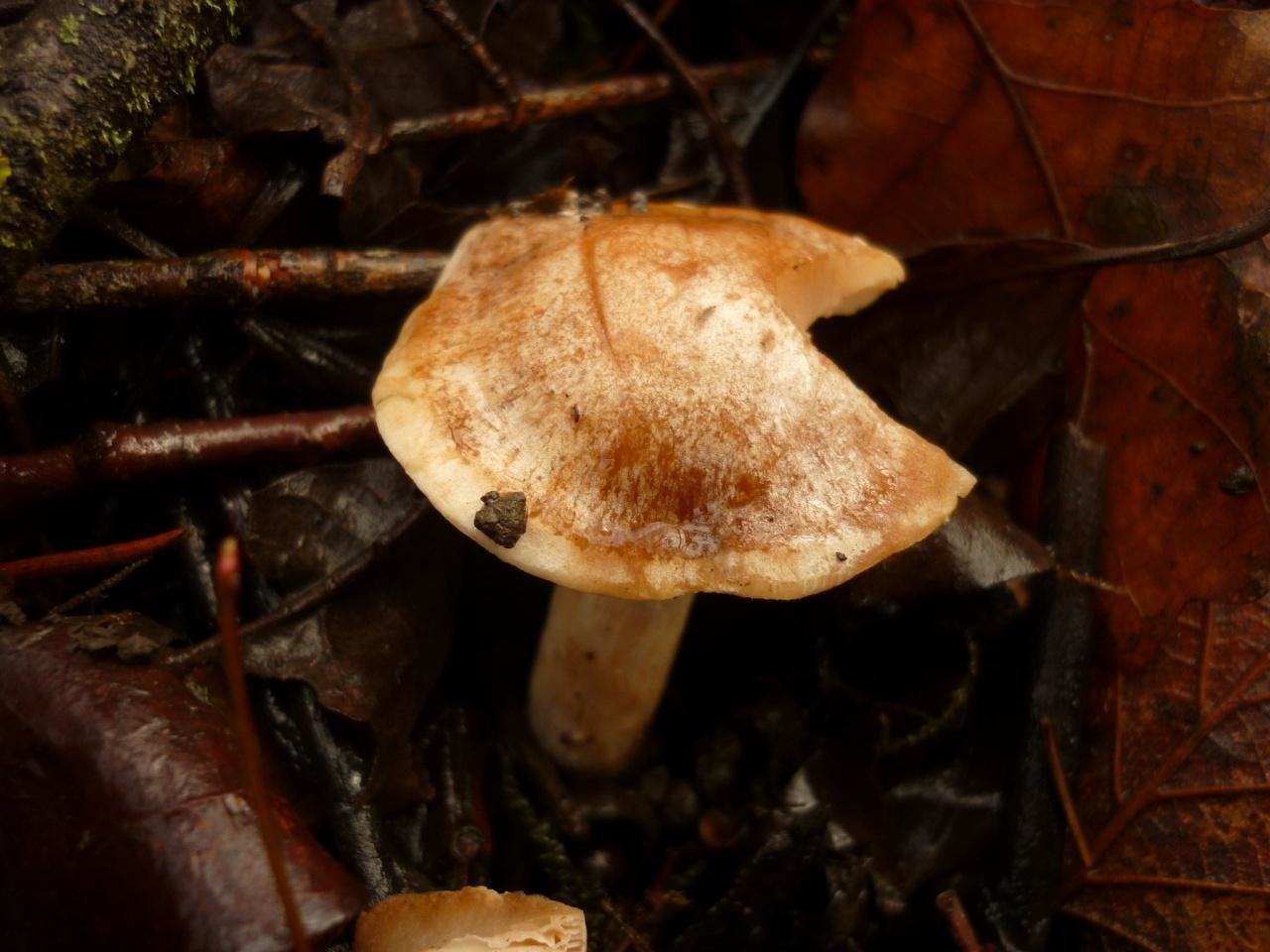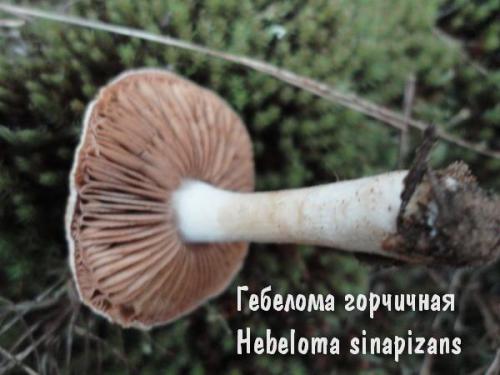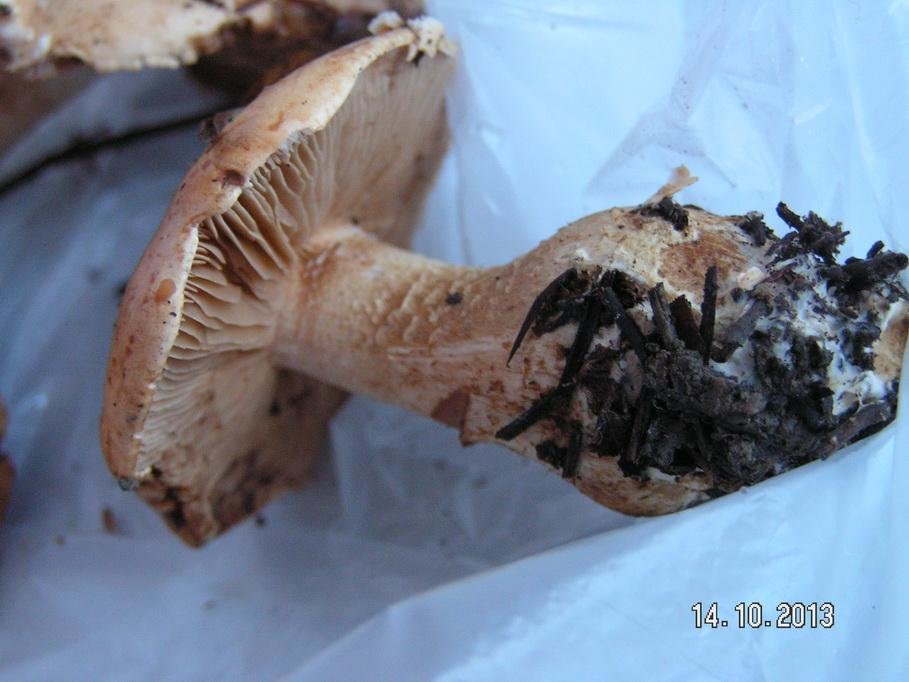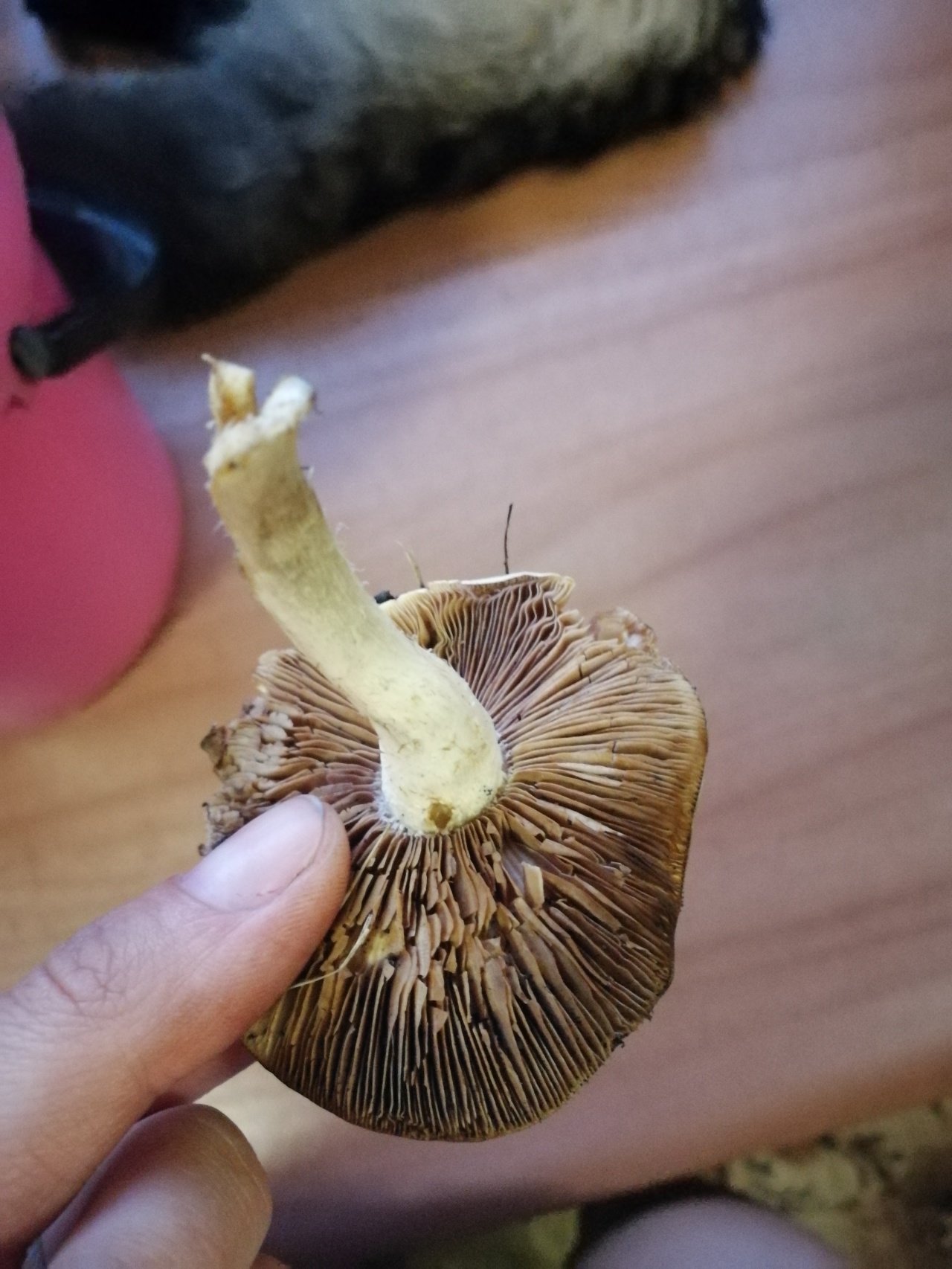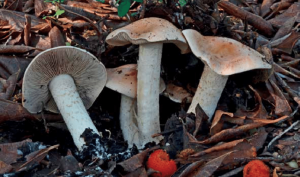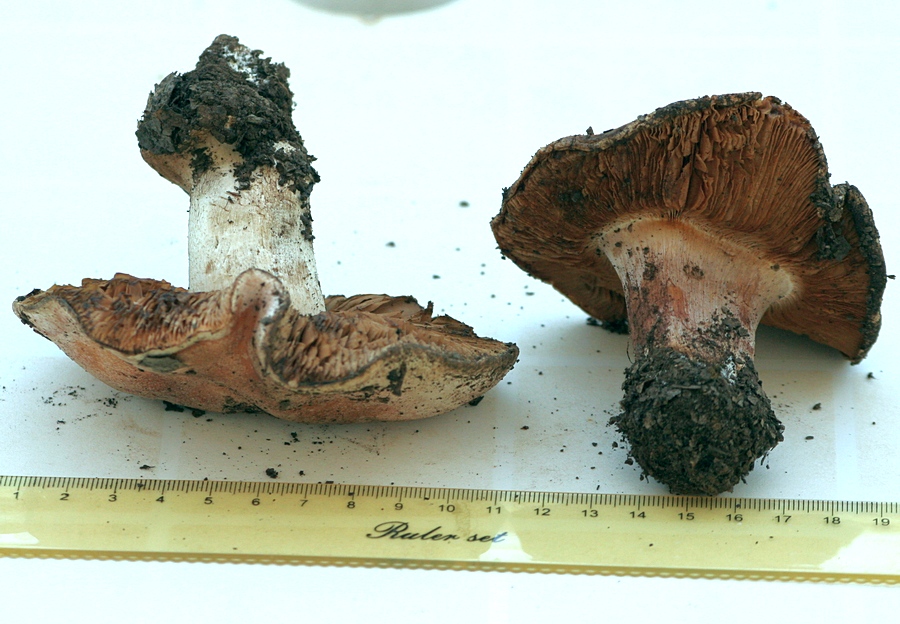Gebeloma inaccessible: is it possible to eat, description and photo
| Name: | Gebeloma inaccessible |
| Latin name: | Hebeloma fastibile |
| Type of: | Inedible, Poisonous |
| Systematics: |
|
Gebeloma inaccessible is a common lamellar mushroom of the Hymenogastric family. The fruit body has a classic shape with a pronounced cap and stem. This species prefers to grow in moist soils. The official name is Hebeloma fastibile.
What does hebeloma inaccessible look like?
The cap in young specimens is hemispherical, but as it grows it becomes prostrate, slightly depressed in the center. Its diameter reaches from 4 to 8 cm. The surface is mucous. There is a fibrous fringe along the edge of the cap. The upper part of the gebeloma is inaccessible to an initially reddish hue, and whitens when ripe. On the reverse side, there are wide rare plates of a whitish shade.
The leg of the inaccessible hebeloma is cylindrical, often spindle-shaped with a thickening at the base. Its height reaches 6-10 cm, and its thickness is 1.5-2 cm. White scales can be seen on the upper part. In young mushrooms, the leg has a dense consistency, but becomes hollow during the ripening period. It has a barely noticeable flaky ring. The shade of the lower and upper parts of the mushroom is identical.
Disputes in hebeloma are inaccessible oval or elliptical in shape. Their size is 7.4-10.4 x 4.5-6.3 microns.
Where Gebeloma grows inaccessible
This species grows everywhere on moist soil, less often on rotting wood. Inaccessible gebele can be found in coniferous, deciduous forests, and in mixed plantings. And also it can grow in a park area, a public garden and an abandoned garden in the presence of favorable conditions for growth.
The ripening period begins at the end of August and lasts all September. Gebeloma inaccessible grows in group plantings.
This species grows throughout the European part of Russia, the Far East and Siberia.
Is it possible to eat the inaccessible gebel
This species belongs to the category of poisonous mushrooms due to the high content of toxins that cause disorders of the digestive system and disrupt cardiac activity. With the provision of timely medical care, recovery occurs 2-3 days after poisoning.
Poisoning symptoms
Signs of intoxication of the body can manifest themselves in different ways, depending on the state of human health, the amount of mushrooms eaten.
Common symptoms of inaccessible gebeloma poisoning:
- nausea;
- bouts of vomiting;
- pain in the abdomen;
- loose stools;
- visual impairment;
- headache;
- high temperature;
- low pressure;
- general weakness.
With a slight deterioration in well-being, unpleasant symptoms persist for 2-3 days and go away on their own. In severe cases, urgent medical attention and hospitalization are required.
First aid for poisoning
With a significant deterioration in health after eating mushrooms, you need to immediately call an ambulance.
While waiting for the doctor, you need to induce vomiting to clear the stomach of the remains of questionable food. Then drink activated charcoal at the rate of 1-2 tablets for every 10 kg of weight. And if possible, do an enema.
Conclusion
Gebeloma inaccessible is a dangerous mushroom that is recommended to be avoided. Therefore, you should learn to distinguish between edible and poisonous species so as not to harm your health.
In case of doubt, it is better to refuse to collect mushrooms, and if alarming symptoms of poisoning appear, provide first aid to the patient.
Definitioner
- Basidia (Basidia)
-
Lat. Basidia.A specialized structure of sexual reproduction in fungi, inherent only in Basidiomycetes. Basidia are terminal (end) elements of hyphae of various shapes and sizes, on which spores develop exogenously (outside).
Basidia are diverse in structure and method of attachment to hyphae.
According to the position relative to the axis of the hypha, to which they are attached, three types of basidia are distinguished:
Apical basidia are formed from the terminal cell of the hypha and are located parallel to its axis.
Pleurobasidia are formed from lateral processes and are located perpendicular to the axis of the hypha, which continues to grow and can form new processes with basidia.
Subasidia are formed from a lateral process, turned perpendicular to the axis of the hypha, which, after the formation of one basidium, stops its growth.
Based on morphology:
Holobasidia - unicellular basidia, not divided by septa (see Fig. A, D.).
Phragmobasidia are divided by transverse or vertical septa, usually into four cells (see Fig. B, C).
By type of development:
Heterobasidia consists of two parts - hypobasidia and epibasidia developing from it, with or without partitions (see Fig. C, B) (see Fig. D).
Homobasidia is not divided into hypo- and epibasidia and in all cases is considered holobasidia (Fig. A).
Basidia is the place of karyogamy, meiosis and the formation of basidiospores. Homobasidia, as a rule, is not functionally divided, and meiosis follows karyogamy in it. However, basidia can be divided into probasidia - the site of karyogamy and metabasidia - the site of meiosis. Probasidium is often a dormant spore, for example in rust fungi. In such cases, probazidia grows with metabasidia, in which meiosis occurs and on which basidiospores are formed (see Fig. E).

See Karyogamy, Meiosis, Gifa.
- Pileipellis
-
Lat. Pileipellis, skin - differentiated surface layer of the cap of agaricoid basidiomycetes. The structure of the skin in most cases differs from the inner flesh of the cap and may have a different structure. The structural features of pileipellis are often used as diagnostic features in descriptions of fungi species.
According to their structure, they are divided into four main types: cutis, trichoderma, hymeniderma and epithelium.
See Agaricoid fungi, Basidiomycete, Cutis, Trichoderma, Gimeniderm, Epithelium.
- Ixokutis
-
Cutis, consisting of hyphae immersed in mucus. The surface of the cap is oily, slippery or slimy.
Lat. Ixocutis.
See Cutis, Gifa.
Toxicity of hebeloma sticky
This is a poisonous mushroom. The toxicity of hebeloma sticky is extremely high. When poisoning with these mushrooms, after a few hours, symptoms such as abdominal cramps, vomiting and diarrhea appear. But scientists have not succeeded to date to identify the toxins that make up the gummy hebeloma.

Other hebelomas
Gebeloma inaccessible is widespread in Siberia and the Far East. The diameter of her cap is 4-8 centimeters. The shape of the cap is prostrate, depressed in the central part. The cap is slimy, while the edge is fluffy. The color is reddish, later becomes whitish. The leg is often twisted, to the base it becomes wider. There are white scales at the top of the stem. The leg is 6-10 centimeters long and 1.5-2 centimeters thick.
Gebelomas grow inaccessible in different forests, on different soils. They can also be found in gardens, squares and parks. The fruiting season is August-September. These are poisonous mushrooms, their toxic substances can cause health problems, in rare cases, even death occurs, but most often recovery occurs after 2-3 days.
Gebeloma girded or brown-mediated gebeloma has a cap with a diameter of 4-9 centimeters. The shape of the cap can be from broadly conical to almost flat, with a tubercle in the central part. The skin of the mushroom is a little sticky. The color of the cap is chestnut brown, lighter at the edges. The leg height is 4-7 centimeters, and the diameter is 0.5-1 centimeters. The leg can be straight or curved, at the base it is slightly widened. The leg is hollow inside. The color of the leg is whitish, and brown at the base.

Gebeloma belted forms mycorrhiza with coniferous and deciduous trees. Groups of these mushrooms can often be found under birches in gardens and parks. The peak of fruiting is from summer to autumn. Gebeloma belted is edible, but it should not be eaten due to the complexity of the definition.
The coal-loving Gebeloma has a relatively small cap - its diameter does not exceed 2 centimeters. While the mushroom is young, the cap resembles a hemisphere, but as it matures, it will stop flat. The hat is naked and slimy to the touch. In the central part there is a yellow-brown tubercle, the edges are lighter. The leg length is 2-4 centimeters. The leg is very thin - its diameter does not exceed 0.5 centimeters. The shape of the leg is cylindrical, the base is wider. The leg is entirely covered with a bloom of a light ocher hue. The remains of the bedspread are well pronounced.
Coal-loving Gebeloma grows on the remains of coal that remain after fires or fires, hence the name. These mushrooms bear fruit in August. They are widespread in Asia and Europe, found in the Magadan region, Tatarstan and the Khabarovsk Territory. It is a poisonous mushroom that causes poisoning.

Root gebeloma, or tapered, or rooted, or rooting has a cap with a diameter of 8-15 centimeters. The shape of the cap is semi-convex. The color of the cap is gray-brown, while the edges are lighter in comparison with the central part. The surface of the cap is covered with large scales. The leg length is 10-20 centimeters. The leg is often curved, expanding at the base. A distinctive feature of this hebeloma is a long root process, from which the mushroom got its name. The color of the leg is light gray. The surface of the leg is dotted with flakes, which slide downward with age.
Root Gebeloma occurs from August to October. These mushrooms grow in various types of forests, they form mycorrhiza with deciduous trees. They can often be found in places with damaged upper soil - ditches, holes, holes. In good years, gebelomas can come across in numerous groups, and sometimes they do not bear fruit at all. This mushroom is not poisonous, but it is not considered edible either.
Lat Hebeloma crustuliniforme Inedible crustuliniformis, Hebelomatis crustuliniformis
Specifications:
| Group: | Lamellar |
|---|---|
| Plates: | Yellow, brown |
| Colour: | Light brown, orange shades, red |
| Info: | Slimy surface of the cap |
Systematics:
| Department: | Basidiomycota (Basidiomycetes) |
|---|---|
| Subdivision: | Agaricomycotina (Agaricomycetes) |
| Class: | Agaricomycetes (Agaricomycetes) |
| Subclass: | Agaricomycetidae |
| Order: | Agaricales (Agaric or Lamellar) |
| Family: | Hymenogastraceae (Hymenogastric) |
| Genus: | Hebeloma |
| View: | Hebeloma crustuliniforme (Hebeloma sticky) |
False doubles
The sticky hebeloma has several sibling species. They all belong to the same genus and are poisonous, inedible:
Coal-loving differs from Glueka Gebeloma in its small size, in the dark color of the cap, and most importantly - it loves to grow in the scorched areas of the forest, hence its name. This species is just as poisonous as the gummy one.
A belted gebeloma has a dark, often brown cap, but its stem is thinner. Unlike the sticky and coal-loving hebeloma, this type of fungus is not so poisonous. It even has good diuretic and diaphoretic properties, but still it is not worth collecting: it is too similar to its poisonous counterparts. Only an experienced specialist can correctly identify the species.
In mustard, the plates are more rare, the cap is not so sticky, it is slightly larger in size. Similar toxicity to gummy hebeloma.
There are a number of edible mushrooms that Gummy Gebeloma looks like. It is often confused with russula (Rússula) or champignon (Agaricus), as well as with valay (Russula foetens), hence the name of the mushroom - “false valui”.
The real Valui is also called the "stinking russula", and it really belongs to this family, while the Gebeloma belongs to a completely different genus.Unlike valuy, the leg of the gebeloma is covered with scales, while its leg is completely smooth.
While it is warm in the forest, the pungent unpleasant smell that distinguishes the false valui from the noble mushrooms is well felt, and mushroom pickers can easily identify the poisonous one. If it starts to get colder in November, then the smell is almost imperceptible, then you can make a mistake with the choice. Most often this happens with inexperienced mushroom pickers.
Gebeloma belted
Taxonomy on Wikisource
Images at Wikimedia Commons
| NCBI 36063 |
Gebelome belted Latin Hebelóma mesophaéum - mushroom genus Hebeloma Hebeloma family Spiderweb Cortinariaceae Previously, the genus belonged to the families Strophariaceae Strophariaceae and Bolbitiaceae Bolbitiaceae Edible, but not recommended for consumption due to difficulties in determining
- Agaricus fastibilis subsp mesophaeus Pers, 1828 basionym
- Inocybe mesophaea Pers P Karst, 1879
- Agaricus mesophaeus Pers Fr, 1838
- Inocybe versipellis var mesophaeus PersS Petersen, 1911
Descriptionedit | edit code
Hat 4-9 cm in diameter, from broadly conical to almost flat, with a tubercle Slightly sticky skin, chestnut brown in the center, lighter towards the edges
The pulp is thin, soft, whitish or light brown, brownish in the lower part of the leg, with a bitter taste and a rare odor
The leg is 4-7 cm high and 0.5-1 cm in diameter, straight or curved, hollow, the base is slightly widened The color of the leg is whitish, brown in the lower part
Plates are frequent, adherent with a tooth, pinkish-brown
Remains of veils In young mushrooms, the plates are covered with a cobweb blanket by a cortina, which sometimes leaves a light brown annular zone in the middle of the stem; white scraps can also be noticeable along the edges of the cap
Brown spore powder, spores 9 × 5.5 μm, almond-shaped, linear-folded
Ecology and distributionedit | edit code
Forms mycorrhiza with various trees, occurs in coniferous, deciduous and mixed forests, often under birches, in parks and gardens, in places with grassy cover Sometimes occurs in wildfires Fruiting in groups
Season late summer - autumn
Literature edit code
- Mushrooms: A Handbook / Per s Italian F Dvin - M: "Astrel", "AST", 2001 - C 159 - ISBN 5-17-009961-4
- Lesso T Mushrooms, key / lane from English L V Garibova, SN Lekomtseva - M: "Astrel", "AST", 2003 - C 93 - ISBN 5-17-020333-0
- Harding P Mushrooms / Translated from English by DS Shchigel - M: "Astrel", "AST", 2002 - C 128 - ISBN 5-17-011765-5
- Serzhanina GI Hat mushrooms of Belarus - Minsk: Science and technology, 1984
Gebeloma belted Comments
Gebeloma belted beatiful post thanks!
Gebeloma with girdleGebeloma with girdle Gebeloma with girdle You are viewing subject
There are excerpts from wikipedia on this article and video
Description
Other names for Gebeloma klekoy: Gebeloma crusty, Horseradish mushroom, False value. Latin name - Hebeloma crustuliniforme. Belongs to the Webinnikov family.
Hat
The mushroom cap is 3 to 10 cm in diameter. When the fruiting body is small, its shape is often convex and neat, and the edges look tucked up. In the old specimen, the cap becomes dense and bends inward. It is yellow, sometimes yellowish-brown, sometimes red. The surface of the caps in young fruiting bodies is smooth, but slimy, and in adulthood it is smooth, dry and shiny.
Hymenophore
In a young false Valui, the hymenophore is whitish-fawn, consists of gray or white adherent and often located notched plates with uneven edges.
In mature hebeloma, the plates, and, consequently, the hymenophores, are brown-yellow; drops of liquid are visible on them, which dry out in dry weather and become brown or almost black.
Pulp
The flesh in young gebelom is white, in mature it is darker, thicker and friable. It has an unpleasant bitter taste and a nasty smell, similar to the smell of a radish, it is because of this that it got its offensive name "horseradish mushroom".
Leg
The height of the leg is from three to ten centimeters, the diameter is from 1 to 2.5 cm, cylindrical in shape. Flaky-scaly, whitish in a young mushroom, solid, then becomes yellowish and hollow inside, thickened towards the base.
Similar views [edit]
Similar mushrooms belonging to the same genus, they are all inedible or slightly poisonous, have a similar rare smell, sometimes the smell resembles cocoa:
- Gebeloma coal-loving (Hebeloma anthracophilum) is smaller and with a darker cap, with a soft stem, grows on burned-out areas.
- Gebeloma belted (Hebeloma mesophaeum) with a thin-fleshy chestnut brown hat and a thinner stem
- Mustard Hebeloma (Hebeloma sinapizans) are larger, with sparser plates and a not so slimy cap.
- Hebeloma edurum
- Hebeloma leucosarx
- Hebeloma pusillum with clay-brown plates, grows under willows.
- Hebeloma griseopruinatum recently described species of the genus, found in Denmark
Description [edit]
The hat is 4-9 cm in diameter, at first hemispherical or rounded-conical with a turned edge, then opens to a flat one with an uneven surface and a tubercle in the center. The skin is smooth and slightly sticky, light yellow or yellowish brown, lighter at the edges.
The pulp is compact, relatively soft, white, with a bitter taste and an unpleasant smell of radish or raw potatoes.
The leg is 3-8 cm high and 0.8-2 cm in diameter, cylindrical, sometimes with a thickening at the base, in mature mushrooms it is hollow, whitish or yellow-brown. Its upper part is covered with a powdery, easily washable coating.
frequent, adherent to the teeth, at first white, then become buffy or gray-brown with a light edge. On the plates, sometimes you can see small droplets of a milky or transparent liquid containing mature spores, when they dry, they leave dark spots.
Spore powder, ocher-brown, spores 11 × 6 μm, almond-shaped, folded.
Hebeloma tapered (Hebeloma radicosum)
Other names:
- Rooted hyfoloma
- Gifoloma rooting
- Agaricus radicosus
Hebeloma tapered or tapered (Latin Hebeloma radicosum) is a fungus of the Hebeloma genus of the Strophariaceae family. Previously, the genus belonged to the families Cortinariaceae and Bolbitiaceae. It is inedible due to its low taste, sometimes it is considered a low-value conditionally edible mushroom, suitable for consumption in limited quantities in combination with other mushrooms.
Root hebeloma hat:
Large, 8-15 cm in diameter; already in his youth takes on a characteristic "semi-convex" shape, which he does not part with until very old age. The color of the cap is gray-brown, lighter at the edges than in the center; the surface is covered with large, non-flaking scales of a darker color, which makes it appear "pockmarked". The pulp is thick and firm, whitish, with a bitter taste and almond aroma.
Plates:
Frequent, loose or semi-adherent; the color varies from light gray in youth to brown-clayey in adulthood.
Spore powder:
Yellowish brown.
Root hebeloma stem:
Height 10-20 cm, often curved, widening at the soil surface. A characteristic feature is a long and relatively thin "root process", from which the Hebeloma tapered and got its name. Color - light gray; the surface of the leg is densely covered with "trousers" of flakes, which slide down with age.
Spreading:
Occurs from mid-August to early October in forests of various types, forming mycorrhiza with deciduous trees; often hebele root can be found in places with damaged topsoil - in grooves and pits, near rodent burrows. In good years for oneself, it can come across in very large groups, in unsuccessful years, it can be absent altogether.
Similar species:
The large size and characteristic "root" do not allow confusing Hebeloma radicosum with any other species.
Edibility:
Apparently inedible, although not poisonous. Bitter flesh and the inaccessibility of "experimental material" do not allow any serious conclusions to be drawn on this score.
Remarks The mushroom is, without any exaggeration, magnificent. Huge, fleshy, dense and firm growing. Mushroom-extrovert: he climbs to get acquainted with the mushroom picker and does not dispose to delusions at his own expense. It's good that he is useless - if only they could see him, if someone needed him.
The danger of mushrooms

Despite the fact that not all types of gebelomas are poisonous, experienced mushroom pickers and doctors do not recommend eating even their conditionally edible comrades. The explanation for this negative attitude towards their use in cooking is simple. It consists in the fact that the differences between different types of gebel are very insignificant, therefore it is very easy to confuse conditionally edible mushrooms with poisonous specimens. Therefore, in order to avoid acute poisoning with Gebel toxins, it is better to refuse to collect them and eat them altogether.
Among the various types of these fungi, mustard hebeloma, inaccessible and coal-loving, can cause acute poisoning. As a rule, death does not occur when they are eaten by healthy people, however, acute disorders of digestion and cardiac activity can be observed.
If the victim has severe heart disease, gastrointestinal tract or kidney disease, the use of poisonous gebel can provoke a significant deterioration in their health and lead to death as a result of acute failure of the affected organs.

